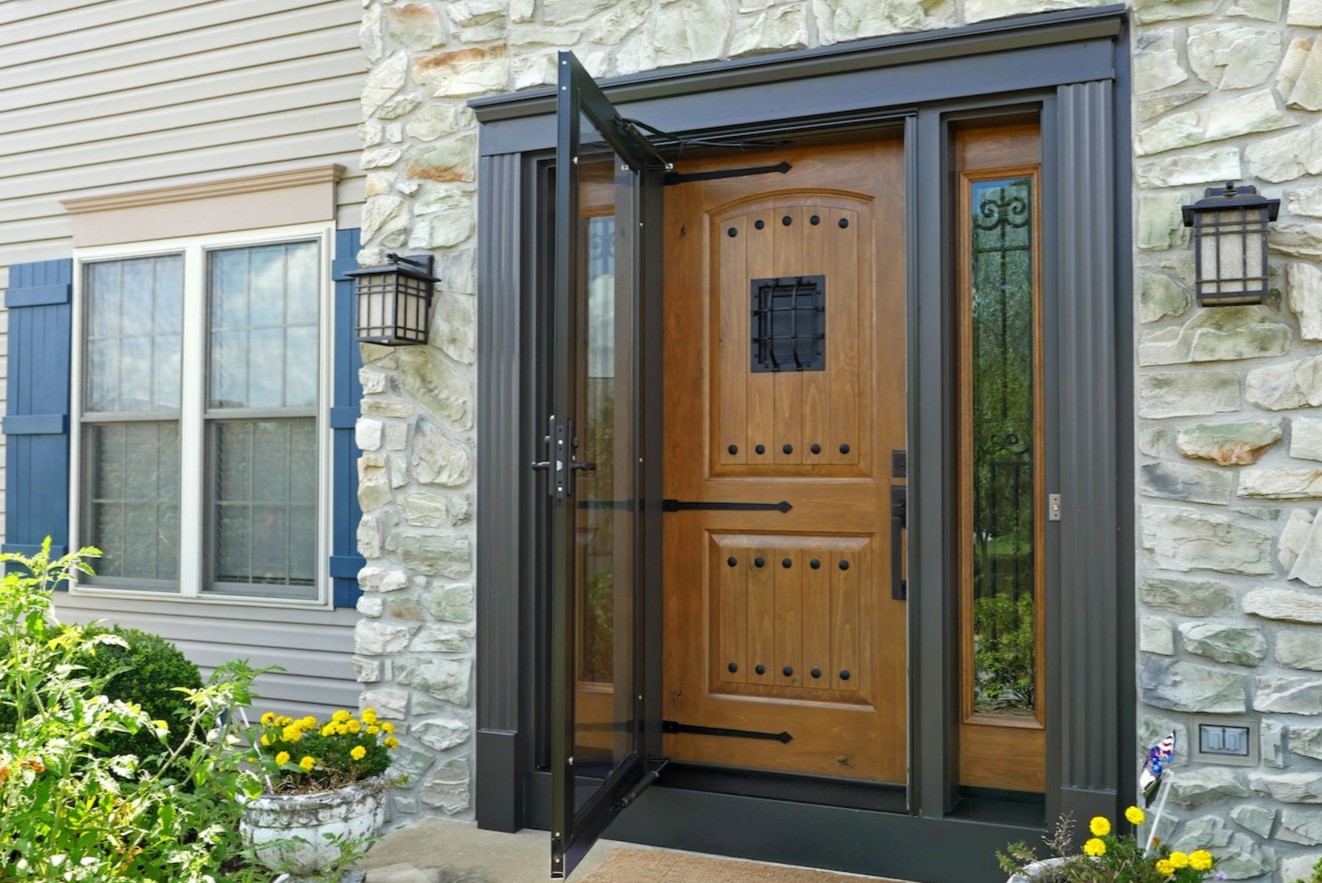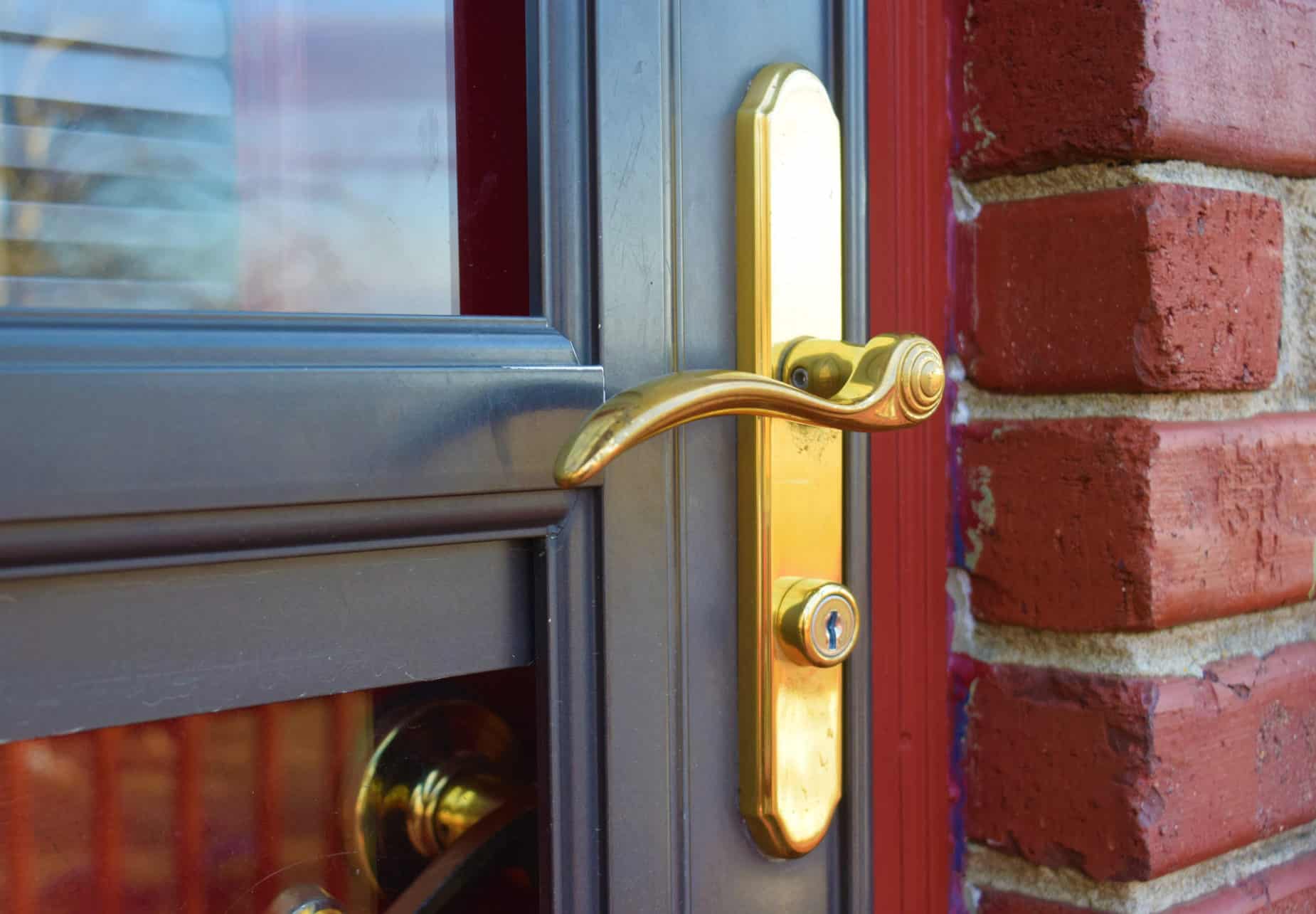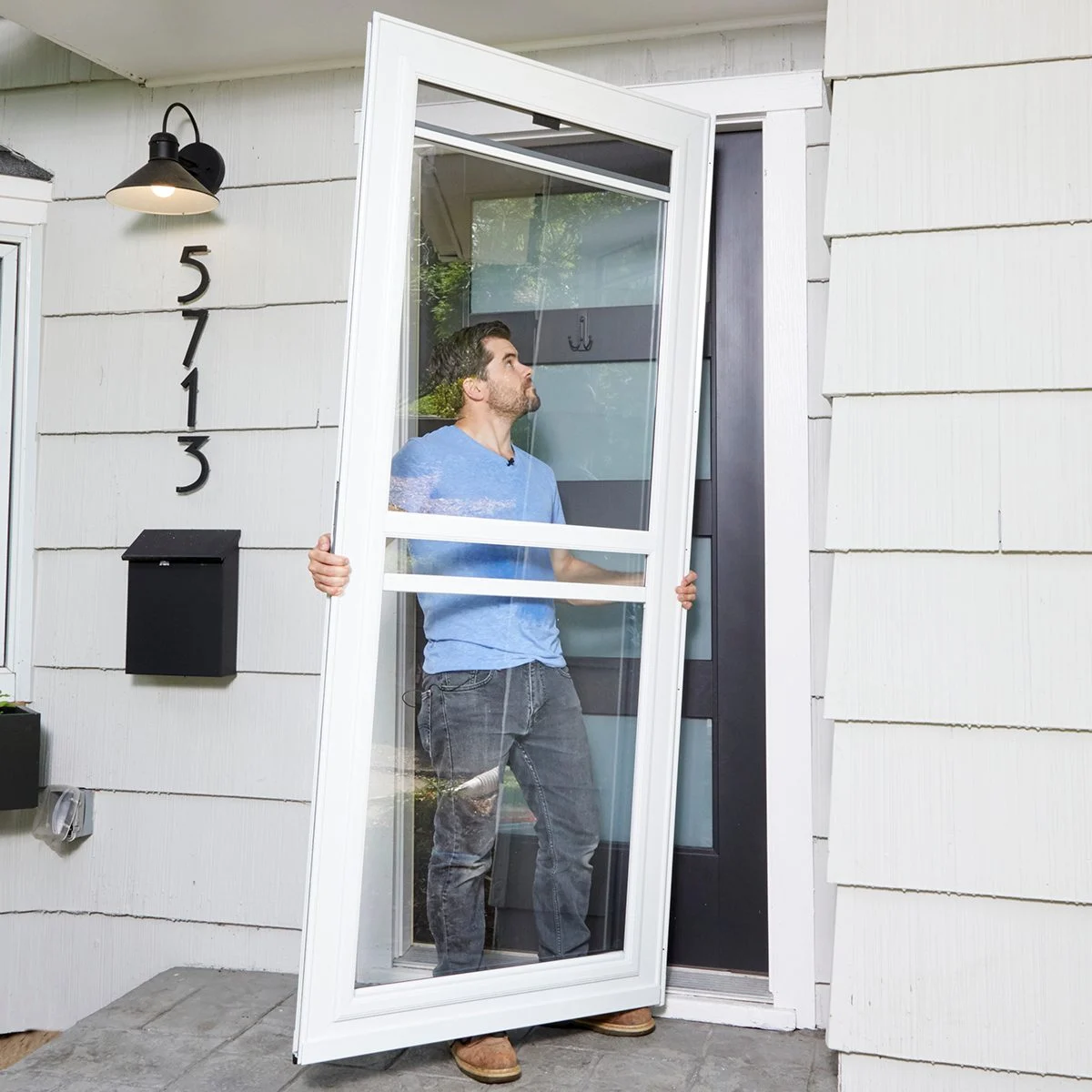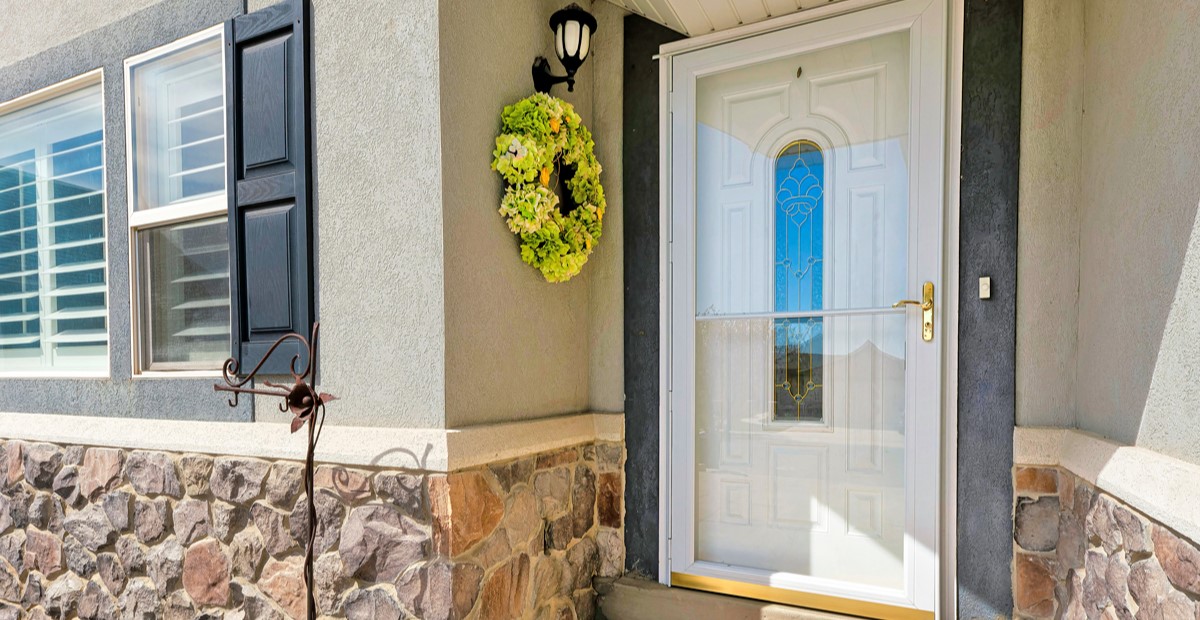Home>Renovation & DIY>Home Renovation Guides>How To Seal A Storm Door


Home Renovation Guides
How To Seal A Storm Door
Modified: February 25, 2024
Learn how to properly seal a storm door with our comprehensive home renovation guide. Get step-by-step instructions and expert tips for a successful project.
(Many of the links in this article redirect to a specific reviewed product. Your purchase of these products through affiliate links helps to generate commission for Storables.com, at no extra cost. Learn more)
Introduction
So, you've got a storm door that's letting in drafts, and you're ready to tackle the issue head-on. Properly sealing a storm door is essential for maintaining a comfortable and energy-efficient home. Whether you're preparing for the upcoming chilly season or simply aiming to improve the overall insulation of your home, this guide will walk you through the steps to effectively seal your storm door.
Sealing a storm door not only enhances the comfort of your living space by preventing drafts and minimizing heat loss, but it also contributes to cost savings on your energy bills. By creating a well-insulated barrier against the elements, you'll be able to enjoy a cozier indoor environment while reducing the strain on your heating system.
In this comprehensive guide, we'll cover everything you need to know about sealing a storm door, from the essential tools and materials required to the step-by-step process of achieving a snug and weatherproof seal. By the end of this guide, you'll have the knowledge and confidence to tackle this home improvement project with ease, ensuring that your storm door provides optimal protection and insulation for years to come.
So, roll up your sleeves, gather your tools, and let's dive into the process of sealing your storm door to create a more comfortable and energy-efficient home environment.
Key Takeaways:
- Keep your home cozy and energy-efficient by sealing your storm door. It’s an easy DIY project that saves money on energy bills and reduces drafts, creating a comfortable indoor environment.
- Gather tools and materials, measure and prepare, apply weather stripping, install a door sweep, and adjust for a snug seal. Enjoy a well-insulated home with a properly sealed storm door.
Read more: Installing A Storm Door
Tools and Materials Needed
Before embarking on the task of sealing your storm door, it’s essential to gather the necessary tools and materials to ensure a smooth and efficient process. Here’s a comprehensive list of what you’ll need:
Tools:
- Tape measure
- Utility knife
- Screwdriver
- Drill (if not pre-drilled)
- Scissors
- Hammer
- Marker or pencil
Materials:
- Weather stripping
- Door sweep
- Screws
- Adhesive (if applicable)
- Finishing nails
- Wood shims (if needed for adjustments)
- Caulk (optional for additional sealing)
Having these tools and materials at your disposal will enable you to proceed with the project seamlessly, ensuring that you’re fully equipped to address any potential issues and achieve a professional and effective seal for your storm door.
Step 1: Measure and Prepare
Prior to diving into the actual sealing process, it’s crucial to take accurate measurements and make the necessary preparations to ensure a precise and effective seal for your storm door. Here’s a detailed walkthrough of this initial step:
Measure the Door Frame: Using a tape measure, carefully assess the dimensions of the door frame to determine the exact length and width of the areas where weather stripping will be applied. Additionally, measure the bottom of the door to ascertain the required length for the door sweep.
Inspect and Clean: Thoroughly examine the door frame and surrounding areas for any dirt, debris, or existing weather stripping that may need to be removed. Clean the frame and the bottom of the door to ensure a smooth and debris-free surface for the new weather stripping and door sweep.
Trim Weather Stripping: If the weather stripping purchased is longer than the measured dimensions, use a utility knife or scissors to carefully trim it to the appropriate length, ensuring a precise fit for each section of the door frame.
Prepare the Door Sweep: If the door sweep requires trimming to fit the width of the door, measure and mark the excess length, then use a hacksaw or utility knife to trim it accordingly. Ensure that the door sweep aligns perfectly with the width of the door for optimal coverage.
By meticulously measuring and preparing the door frame and the necessary sealing components, you’ll lay a solid foundation for the subsequent steps, setting the stage for a successful and efficient sealing process for your storm door.
Read more: How To Remove A Storm Door
Step 2: Apply Weather Stripping
Weather stripping is a key component in sealing a storm door, as it serves to create a tight seal between the door and the frame, effectively blocking out drafts and moisture. Here’s a step-by-step guide on how to apply weather stripping to your storm door:
Cut the Strips: Using the measurements obtained in the previous step, cut the weather stripping to the appropriate lengths for the top, bottom, and sides of the door frame. Ensure that the cuts are precise and align with the dimensions of each section.
Position and Align: Starting with the top section, align the weather stripping along the edge of the door frame, ensuring that it is positioned to make full contact with the door when closed. Press the weather stripping firmly against the frame to secure it in place.
Apply to Sides: Proceed to apply the weather stripping along the vertical sides of the door frame, pressing it snugly against the edges to create a tight seal. Trim any excess length if necessary, ensuring that the strips meet seamlessly at the corners.
Install Bottom Strip: Affix the weather stripping to the bottom of the door frame, ensuring that it makes full contact with the threshold when the door is closed. This bottom strip plays a crucial role in preventing drafts and maintaining insulation.
Test for Fit: After applying the weather stripping to all sections of the door frame, open and close the door to ensure that the strips do not impede its movement and that they create a consistent seal when the door is closed.
By carefully applying weather stripping to your storm door, you’ll effectively fortify it against drafts and external elements, contributing to a more energy-efficient and comfortable indoor environment.
Step 3: Install Door Sweep
Installing a door sweep is a critical component of sealing a storm door, as it serves to block drafts, dust, and pests from entering underneath the door. Follow these steps to effectively install a door sweep:
Position the Door Sweep: With the door in the closed position, hold the door sweep against the interior bottom of the door to determine the proper placement. Ensure that the sweep aligns with the edge of the door and spans its entire width.
Mark and Trim: Using a marker or pencil, mark the excess length of the door sweep based on the width of the door. Carefully remove the sweep and trim it to the marked length using a hacksaw or utility knife, ensuring a precise fit.
Attach the Sweep: With the door open, position the trimmed door sweep at the interior bottom of the door. Secure it in place by screwing it into the pre-drilled holes using the provided screws. If the door sweep is adhesive-backed, carefully remove the protective covering and firmly press it into place.
Adjust if Necessary: Close the door and observe the contact between the door sweep and the threshold. If needed, make adjustments to ensure that the sweep creates a snug seal without impeding the smooth operation of the door.
Test for Effectiveness: After installing the door sweep, open and close the door to confirm that it moves freely and that the sweep creates a tight seal with the threshold, effectively blocking drafts and external elements from entering the interior space.
By installing a door sweep, you’ll significantly enhance the insulation and protection provided by your storm door, creating a more comfortable and energy-efficient environment within your home.
Apply a weather stripping or door sweep to the bottom of the storm door to create a tight seal and prevent drafts. This will help to improve energy efficiency and keep out rain and snow.
Step 4: Adjust and Seal
After applying weather stripping and installing the door sweep, it’s essential to make any necessary adjustments to ensure a secure and effective seal for your storm door. Follow these steps to fine-tune the fit and address any potential gaps:
Check for Gaps: Carefully inspect the areas around the door frame, including the top, bottom, and sides, to identify any gaps or areas where the seal may be compromised. Look for light seepage or feel for drafts to pinpoint potential issues.
Make Minor Adjustments: If gaps or inconsistencies are detected, consider using wood shims to adjust the positioning of the door frame or the door itself. Placing shims strategically can help eliminate gaps and ensure a snug fit when the door is closed.
Apply Caulk if Needed: In cases where gaps persist or where the door frame meets the surrounding structure, consider using caulk to seal any remaining openings. Apply a bead of caulk along the edges of the frame to create a seamless and airtight seal.
Test for Drafts: After making adjustments and applying caulk, test the door for drafts by running your hand along the edges and feeling for any air movement. Additionally, use a lit candle or an incense stick to detect subtle drafts and verify the effectiveness of the seal.
Ensure Smooth Operation: Throughout the adjustment process, ensure that the door continues to open and close smoothly without any resistance. Make any final tweaks to the positioning of the door and frame to maintain optimal functionality.
By meticulously adjusting and sealing your storm door, you’ll effectively eliminate drafts and enhance the overall insulation of your home, creating a more comfortable and energy-efficient living space for you and your family.
Conclusion
Congratulations! By following the comprehensive steps outlined in this guide, you’ve successfully sealed your storm door, enhancing the comfort, energy efficiency, and overall insulation of your home. With a snug and weatherproof seal in place, you can look forward to a cozier indoor environment and potential savings on your energy bills.
Sealing a storm door is a valuable home improvement project that not only contributes to a more comfortable living space but also plays a role in reducing energy consumption and environmental impact. By preventing drafts and maintaining optimal insulation, you’re taking a proactive step toward creating a more sustainable and efficient home environment.
Remember, the proper maintenance and care of your storm door’s seal are crucial for long-term effectiveness. Periodically inspect the weather stripping and door sweep for wear and tear, and promptly replace any components that show signs of deterioration to ensure continued protection and insulation.
As you enjoy the benefits of a well-sealed storm door, take pride in your accomplishment and the positive impact it has on your home. Whether it’s keeping the winter chill at bay or maintaining a cool oasis during the summer months, your efforts in sealing your storm door contribute to a more comfortable and sustainable living space for you and your loved ones.
Thank you for taking the time to learn and implement the techniques for sealing a storm door. Your dedication to home improvement and energy efficiency is a commendable investment in the comfort and sustainability of your living environment.
Frequently Asked Questions about How To Seal A Storm Door
Was this page helpful?
At Storables.com, we guarantee accurate and reliable information. Our content, validated by Expert Board Contributors, is crafted following stringent Editorial Policies. We're committed to providing you with well-researched, expert-backed insights for all your informational needs.















0 thoughts on “How To Seal A Storm Door”